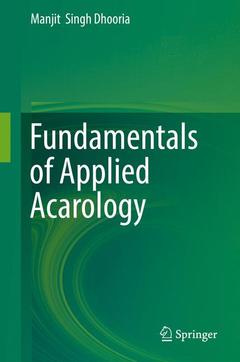Description
Fundamentals of Applied Acarology, Softcover reprint of the original 1st ed. 2016
Author: Dhooria Manjit Singh
Language: English
Subjects for Fundamentals of Applied Acarology:
Keywords
Acarology; Entomology; Mites; Prasitology; Ticks; Model invertebrates
189.89 €
In Print (Delivery period: 15 days).
Add to cartPublication date: 12-2016
Support: Print on demand
189.89 €
In Print (Delivery period: 15 days).
Add to cartPublication date: 07-2018
Support: Print on demand
Description
/li>Contents
/li>Biography
/li>Comment
/li>
Comprehensively provdes information on basic and applied aspects of Acarology
Elucidates widespread applications of acarology in diverse fields of life
Provides detailed account of pest management in varied crops
Includes supplementary material: sn.pub/extras




